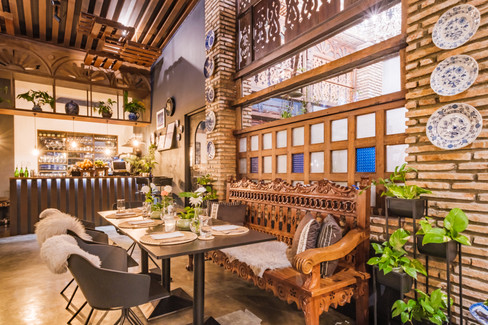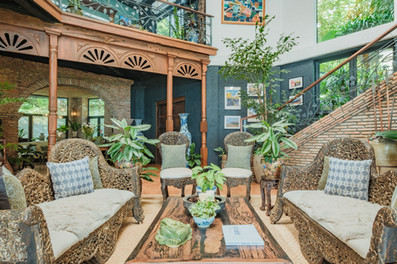
Nordic interior design is renowned for its clean lines, minimalist aesthetic, and emphasis on natural elements. One of the key aspects of this design philosophy is the integration of nature into indoor spaces. By incorporating plants and other natural elements, you can create a calming and rejuvenating environment that reflects the beauty of the outdoors. Here are some tips for embracing Nordic design principles to bring the outdoors in:
Use of Natural Materials: Embrace the use of natural materials such as wood, stone, and leather in your interior design. Opt for furniture and decor items made from these materials to create a warm and inviting atmosphere reminiscent of the outdoors.
Incorporate Plants: Plants are a central element of Nordic interior design. Choose a variety of indoor plants such as ferns, rubber plants, and peace lilies to add greenery and life to your space. Place them strategically near windows or in corners to mimic natural habitats.
Natural Light: Maximizing natural light is key to Nordic design. Keep window treatments minimal to allow ample light to flood your space. Consider adding skylights or larger windows to bring in more natural light and create a sense of openness.
Neutral Colour Palette: Stick to a neutral colour palette inspired by nature. Whites, greys, browns, and muted greens are commonly used in Nordic design to create a calming and cohesive look. Add pops of colour with textiles or artwork inspired by nature.
Cozy Textures: Incorporate cozy textures such as wool, sheepskin, and linen to create a sense of warmth and comfort. Add throw blankets, cushions, and rugs in these materials to enhance the cozy ambiance of your space.
Minimalist Approach: Adopt a minimalist approach to decor by keeping clutter to a minimum. Choose a few statement pieces that reflect your connection to nature, such as a large piece of driftwood or a nature-inspired sculpture.
Natural Scents: Enhance the ambiance of your space by introducing natural scents. Use essential oil diffusers or scented candles with fragrances like pine, cedarwood, or eucalyptus to create a calming and rejuvenating atmosphere.
Incorporating these Nordic interior design tips into your home will not only create a beautiful and inviting space but can also enhance your overall mental wellbeing by bringing the beauty of the natural outdoors in. Here are some more benefits of following these design principles for your home:
Improved Air Quality: Plants are natural air purifiers, absorbing carbon dioxide and releasing oxygen. They can help remove toxins like benzene and formaldehyde from the air, creating a healthier indoor environment.
Enhanced Well-being: Studies suggest that being around natural elements can reduce stress levels and improve overall mood. Indoor plants, in particular, have been linked to increased feelings of calmness and relaxation.
Visual Appeal: Natural elements add aesthetic value to your home. Plants bring in varying textures and colours, while natural wood can provide warmth and a sense of coziness.
Connection to Nature: In urban environments, incorporating natural elements can help maintain a connection to the natural world. This connection is essential for mental well-being and can help alleviate feelings of detachment from nature.
Sound Absorption: Natural materials like wood have acoustic properties that can help absorb sound, reducing echoes and creating a quieter, more comfortable living space.
Versatility and Timelessness: Natural elements such as wood and plants are versatile and can complement a wide range of interior design styles. They also tend to age gracefully, adding a timeless quality to your home decor.
Biophilic Design Benefits: Biophilic design principles emphasize the innate human connection to nature. By incorporating natural elements, you can create spaces that feel more inviting, supportive of productivity, and conducive to overall well-being.
Environmental Impact: Choosing sustainable materials like reclaimed wood or responsibly sourced plants can reduce your home's environmental footprint, promoting eco-friendly practices.
Overall, integrating natural elements into your interior design not only enhances the aesthetic appeal of your home but also contributes to your well-being and connection to the natural world.












Comments